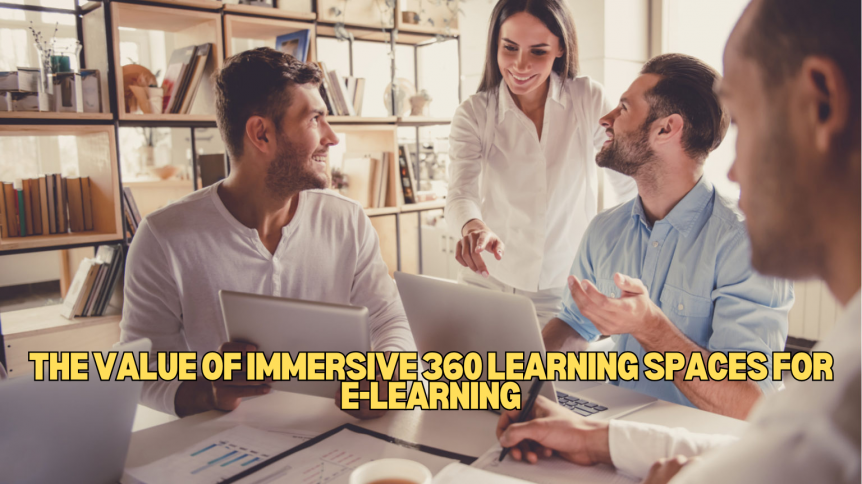The Value of Immersive 360 Learning Spaces for E-Learning
In the rapidly evolving landscape of e-learning, the integration of immersive 360 learning spaces has emerged as a groundbreaking approach to education and training. This innovative method extends beyond traditional learning paradigms, offering a virtual, interactive environment that simulates real-life scenarios. By embracing a 360-degree perspective, learners are not just passive recipients of information but active participants in a dynamic learning journey. This blog post delves into the essence of immersive 360 learning spaces and their profound impact on e-learning.
What Are Immersive 360 Learning Spaces?
Immersive 360 learning spaces refer to virtual learning environments that utilise 360-degree multimedia to create a comprehensive, engaging educational experience. These environments are designed to simulate real-world scenarios, enabling learners to explore, interact with, and learn from the virtual world around them. The immersion in these scenarios facilitates a deeper understanding and retention of the knowledge being imparted, making learning both effective and enjoyable.
The Advantages of Immersive 360 Learning Spaces
The benefits of integrating immersive 360 learning spaces into e-learning are manifold. Here are some key advantages:
- Enhanced Engagement: The immersive nature of 360 learning spaces captivates learners’ attention more effectively than traditional learning methods, thereby increasing engagement and motivation.
- Improved Retention: By providing experiential learning opportunities, these spaces help in the better retention of information, as learners are actively involved in the learning process.
- Accessibility: Immersive 360 learning spaces allow learners to experience scenarios that might be inaccessible or impractical in real life, bridging the gap between theory and practice.
- Scalability: These virtual environments can accommodate a wide range of learning objectives and styles, making them a versatile tool in the e-learning toolkit.
Integration with Other E-Learning Innovations
The value of immersive 360 learning spaces is further amplified when combined with other e-learning innovations. For instance, the application of Artificial Intelligence (AI) in e-learning can personalise the learning experience within these spaces, adapting scenarios in real-time based on the learner’s performance and preferences. Similarly, the principles of Malone’s Theory of Intrinsically Motivating Instruction can be incorporated to design scenarios that are not only educational but also inherently engaging and rewarding for the learner.
Implementing Immersive 360 Learning Spaces
To effectively implement immersive 360 learning spaces in e-learning, several considerations must be taken into account:
- Learning Objectives: As highlighted in Questions That Help Define Learning Objectives, it’s crucial to clearly define the objectives of the learning experience to ensure that the immersive scenarios are aligned with the desired outcomes.
- Quality Assurance: Following Essential Quality Assurance Tips for E-Learning Development Projects, thorough testing and quality assurance are essential to guarantee that the immersive spaces function seamlessly across different devices and platforms.
- Scenario-Based Learning: Incorporating Scenario-Based Learning and understanding its benefits can provide valuable insights into creating effective and impactful immersive learning scenarios.
Conclusion
The advent of immersive 360 learning spaces marks a significant milestone in the evolution of e-learning. By offering an engaging, interactive, and realistic learning environment, these spaces have the potential to revolutionise how knowledge is imparted and acquired. As we continue to explore and integrate these virtual environments with other e-learning innovations, the future of education looks not only promising but profoundly transformative.
The journey towards creating effective e-learning experiences is ongoing, and as technology advances, so too will the methods and strategies we employ in education. The immersive 360 learning spaces are but one piece of the puzzle, yet they represent a significant leap forward in making learning not just an activity, but an experience.
